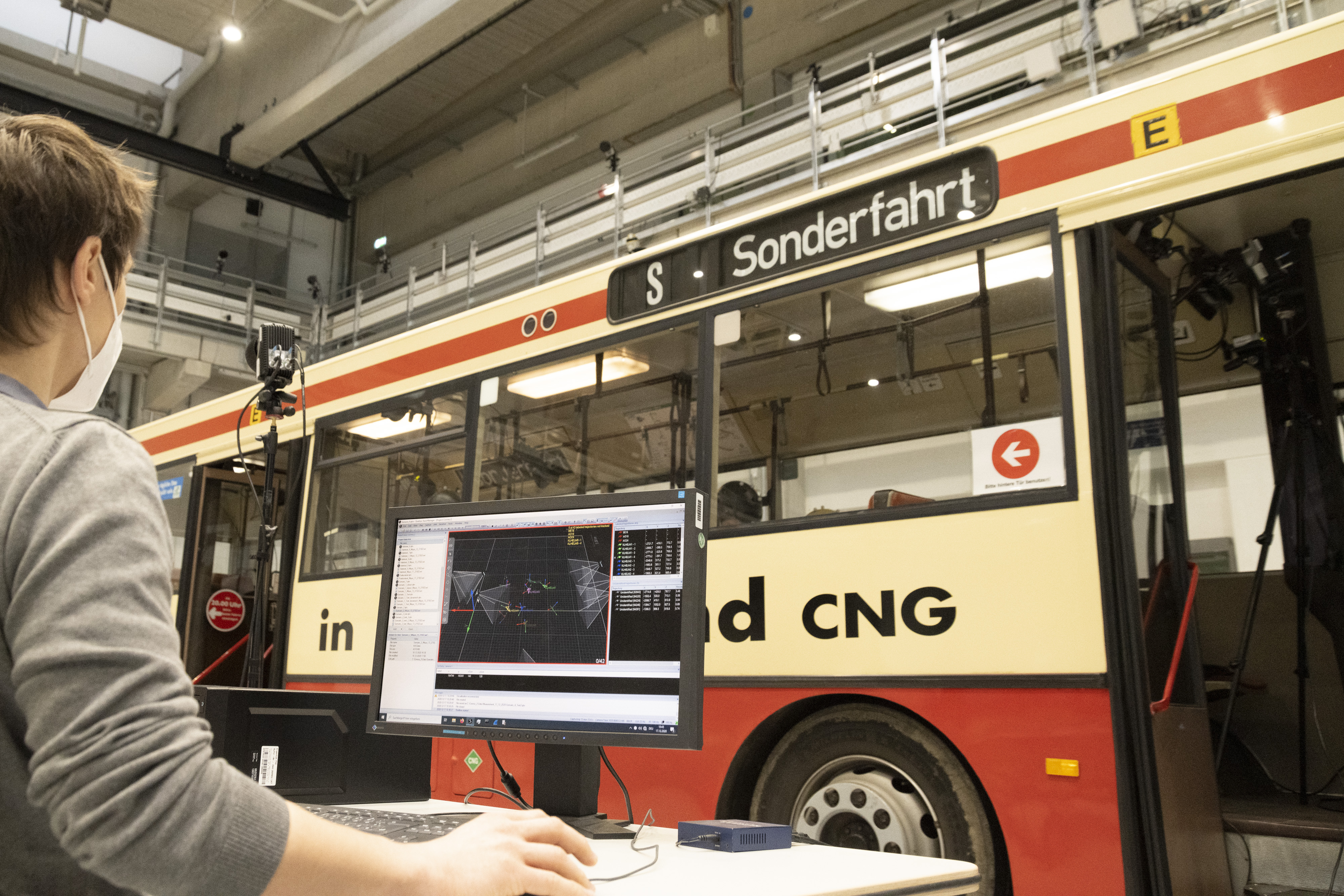Distancing and contact tracing are the most effective means of containing and controlling chains of infection, but implementing these measures is harder than it sounds without the use of modern aids. The Corona-Warn-App was developed to support these efforts – and was tested by Fraunhofer IIS.
Role-playing tests
Tests of the official Corona-Warn-App involved re-enacting realistic scenarios with 10 to 20 test subjects, who wore helmets equipped with markers. These markers were tracked by installed cameras so that the team could check whether the app had estimated the distances correctly. This testing included the simulation of everyday situations such as traveling on public transport or on flights with onboard catering, as well as the shielding of smartphones by suitcases, and other similar scenarios.
Crane setup
Over more than 1,000 testing hours, crane tests were used to replicate everyday situations at the Test and Application Center L.I.N.K. A body dummy was attached to the crane, and cans of antifreeze used to simulate other people. In accordance with programmed situations, the crane approached test phones that had been randomly marked as infected or healthy. Testing included typical scenarios in the workplace and at school, as well as leisure activities and typical activities at the hairdresser’s, at the supermarket, and in other similar settings. This approach allowed the simulation of real movement patterns and the collection of large volumes of data.
